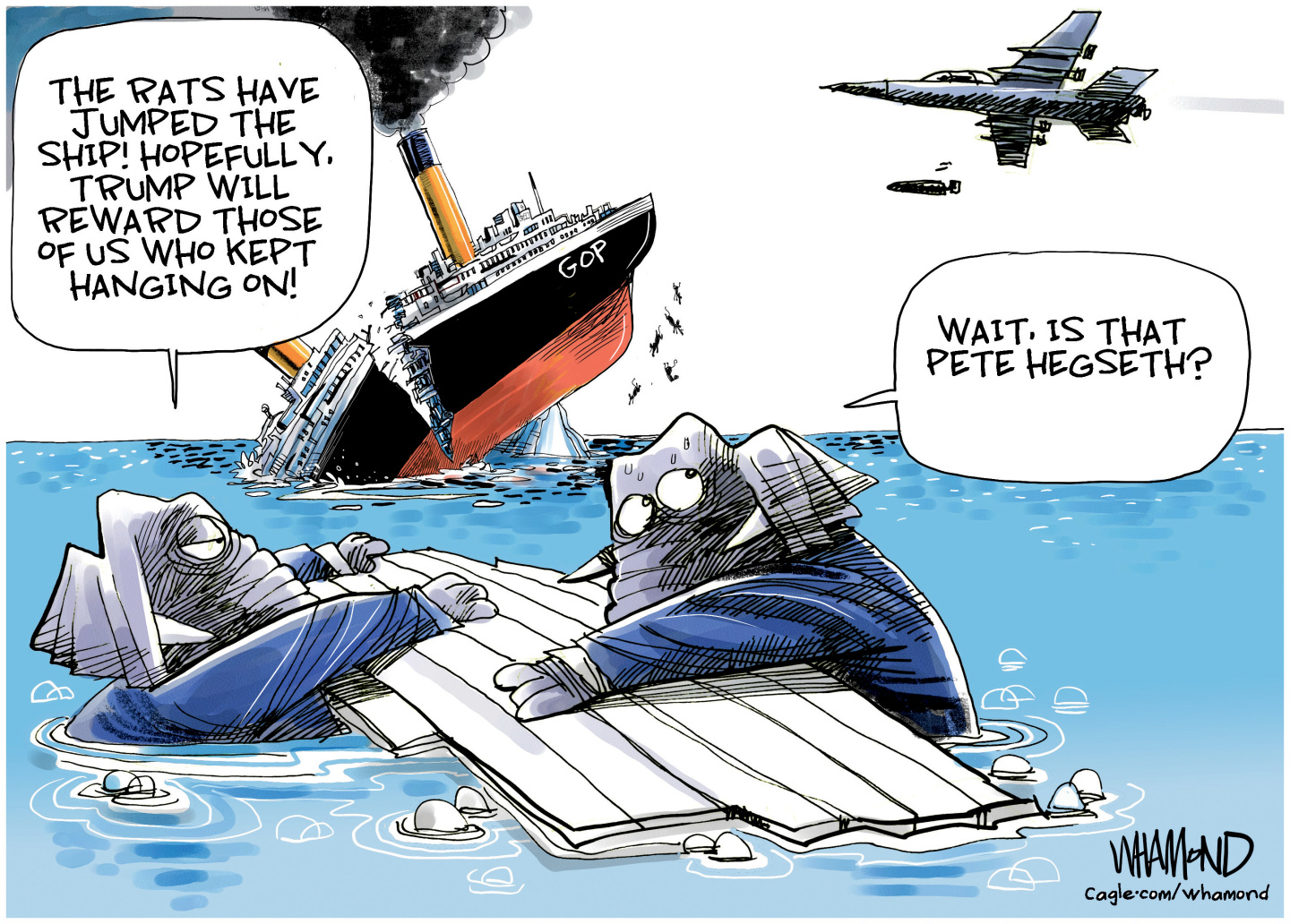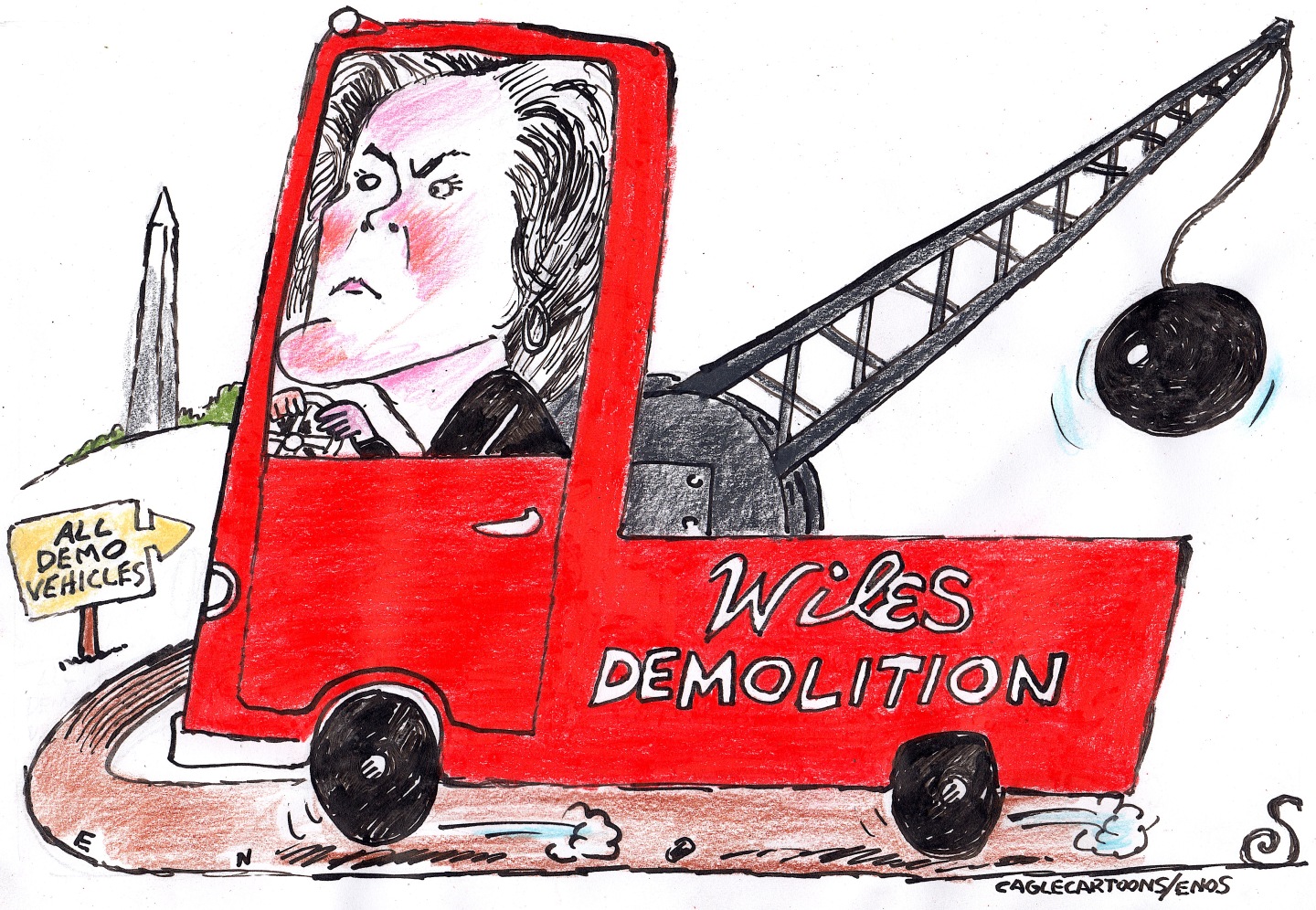What the experts say
A word for the Dow; Good food for less; The peril of retailer credit
A word for the Dow
The Dow Jones industrial average doesn’t deserve all the scorn it has recently reaped, said Matt Krantz in USA Today. “There’s no question there’s usually a dog or two in the Dow, but the measure itself is fairly reflective of the market.” With just 30 stocks, it has a much narrower base than the Standard & Poor’s 500 index, yet the two “move remarkably in tandem.” The difference is that when a stock in the Dow languishes, “it’s a more glaring problem since the measure has fewer members.” And because the Dow weights stocks on their per-share stock price, when a constituent’s stock falls, “so does its influence.” That helps to even out the Dow’s long-term performance, which over the last five years is much like the S&P’s: up 50 percent.
Good food for less
The Week
Escape your echo chamber. Get the facts behind the news, plus analysis from multiple perspectives.

Sign up for The Week's Free Newsletters
From our morning news briefing to a weekly Good News Newsletter, get the best of The Week delivered directly to your inbox.
From our morning news briefing to a weekly Good News Newsletter, get the best of The Week delivered directly to your inbox.
“It’s easy to eat healthily when you have unlimited money to spend on free-range chicken or organic grapes,” said Bruce Watson in DailyFinance.com. But how can you “balance your political and dietary concerns” when you’re on a tight budget? First, let’s dispel the myth that big business necessarily means bad business. “With a little bit of research—and a little bit of label-reading—you can often find relatively healthy foods from some of the least likely companies.” Reading labels can be daunting, so “start off small, focusing on only a few additives” and ingredients to watch out for. It’s always nice to have free-range or organic meats, but if those are too expensive, look for halal or kosher products. “Because of Jewish and Muslim dietary laws, these animals tend to be more carefully raised, slaughtered, and butchered.”
The peril of retailer credit
Don’t sign up for a store credit card on impulse, said Jason Steele in ABCNews.com. While “filling out an application in exchange for a big discount may be tempting” when you’re making a big purchase, think it through first. Find out whether the card has a grace -period—“the time that cardholders have to pay their balance in full without having to pay interest.” Some don’t, meaning that interest starts stacking up on day one. And while cards on the lower end carry interest rates from 6 to 16 percent, many cards charge considerably more. In general, you should consider retail cards to be a last resort. You may end up paying quite a bit over the long run for “the big lure” of an immediate discount you might have secured another way.
A free daily email with the biggest news stories of the day – and the best features from TheWeek.com
-
 Political cartoons for December 20
Political cartoons for December 20Cartoons Saturday’s political cartoons include drowning rats, the ACA, and more
-
 5 fairly vain cartoons about Vanity Fair’s interviews with Susie Wiles
5 fairly vain cartoons about Vanity Fair’s interviews with Susie WilesCartoon Artists take on demolition derby, alcoholic personality, and more
-
 Joanna Trollope: novelist who had a No. 1 bestseller with The Rector’s Wife
Joanna Trollope: novelist who had a No. 1 bestseller with The Rector’s WifeIn the Spotlight Trollope found fame with intelligent novels about the dramas and dilemmas of modern women